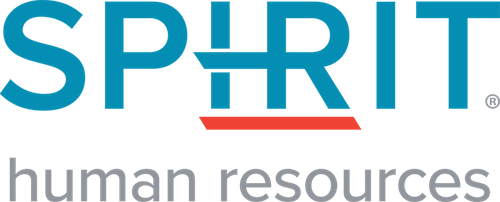OSHA Reporting Guidance – COVID-19

We are all in a COVID-19 learning phase. Guidance, recommendations, and legislation change almost daily. It is challenging to keep up with even one aspect of this pandemic, much less all of it.
This article will focus on Occupational Safety and Health Administration (OSHA) guidance for reporting occupational illnesses related to COVID-19. The provisions will take effect immediately and are intended to be time-limited to the current public health crisis.
What is a Recordable Injury or Illness?
Under OSHA’s recordkeeping requirements, work-related injury and illness is generally recordable if it results in any of the following: death, days away from work, restricted work or transfer to another job, medical treatment beyond first aid, or loss of consciousness. If it involves a significant injury or illness diagnosed by a physician or other licensed health care professional, it is recordable even if it does not qualify as a reason in the list.
Is COVID-19 Illness to be Recorded?
Under OSHA’s recordkeeping requirements, COVID-19 is a recordable illness, and employers in the healthcare industry, emergency response organizations (e.g., emergency medical, firefighting, and law enforcement services), and correctional institutions are responsible for recording cases of COVID-19, if:
(1) the case is a confirmed case of COVID-19, as defined by Centers for Disease Control and Prevention (CDC)
(2) the case is work-related as defined by 29 CFR § 1904.5 and
(3) the case involves one or more of the general recording criteria set forth in 29 CFR § 1904.7.
Other Employers
On March 11, 2020 COVID-19 was declared a global pandemic, and the extent of transmission is a rapidly evolving issue. In areas where there is ongoing community transmission, employers other than those in the healthcare industry, emergency response organizations, and correctional institutions may have difficulty making determinations about whether workers who contracted COVID-19 did so due to exposures at work.
Considering those difficulties, OSHA is exercising its enforcement discretion in order to provide certainty to the regulated community.
Until further notice, however, OSHA will not enforce 29 CFR § 1904 to require other employers to make the same work-relatedness determinations, except where:
- There is objective evidence that a COVID-19 case may be work-related. This could include, for example, a number of cases developing among workers who work closely together without an alternative explanation; and
- The evidence was reasonably available to the employer. For purposes of this article, examples of reasonably available evidence include information given to the employer by employees, as well as information that an employer learns regarding its employees’ health and safety in the ordinary course of managing its business and employees.
COVID-19 is a respiratory illness and if an incident is recordable, it should be coded as such on the OSHA Form 300. Because this is an illness, if an employee voluntarily requests that his or her name not be entered on the log the employer should comply.
Safe Workplace Practices
Employers who operate with employees present should continue to practice good hygiene within their workplaces to mitigate COVID-19’s effects and reduce the chance of a work-related illness.
The CDC provides many good resources and recommendations for maintaining a healthy work environment:
- Provide tissues and no-touch disposal receptacles.
- Provide soap and water in the workplace. If soap and water are not readily available, use alcohol-based hand sanitizer that is at least 60% alcohol. If hands are visibly dirty, soap and water should be chosen over hand sanitizer. Ensure that adequate supplies are maintained.
- Place hand sanitizers in multiple locations to encourage hand hygiene.
- Place posters that encourage hand hygieneto help stop the spread at the entrance to your workplace and in other workplace areas where they are likely to be seen.
- Discourage handshaking – encourage the use of other noncontact methods of greeting.
Perform routine environmental cleaning and disinfection:
- Routinely clean and disinfect all frequently touched surfaces in the workplace, such as workstations, keyboards, telephones, handrails, and doorknobs.
- For disinfection, most common EPA-registered household disinfectants should be effective. Follow the manufacturer’s instructions for all cleaning and disinfection products (e.g., concentration, application method and contact time, etc.).
- Discourage workers from using other workers’ phones, desks, offices, or other work tools and equipment, when possible. If necessary, clean and disinfect them before and after use.
- Provide disposable wipes so that commonly used surfaces (for example, doorknobs, keyboards, remote controls, desks, other work tools and equipment) can be wiped down by employees before each use.
For more COVID-19 related information, please see our blog posts on the CARES Act and FFCRA.
Latest Blogs from Spirit HR
Your Quick Guide to E-Verify
The federal E-Verify program has been around in some form since 1996, and it’s only getting bigger. With Florida joining the program earlier this year, around half of all states now require E-Verify participation in some way. Enrolling in the program isn’t difficult,...
3 Reasons to Outsource Your HR
Navigating the complexities of HR management can be a daunting task for businesses, especially when streamlining operations and optimizing costs are crucial for success. Outsourcing your HR functions can be a game-changer, providing the breathing room you need as a...
3 Steps to Improve Health and Safety Compliance in Your Workplace
Health and safety are two terms that can seem tedious concerning the workplace, but ignoring them and the standards they entail could result in injury, illness or even death. Prevention and preparation are integral to a safe, happy and compliant organization. Here are...
